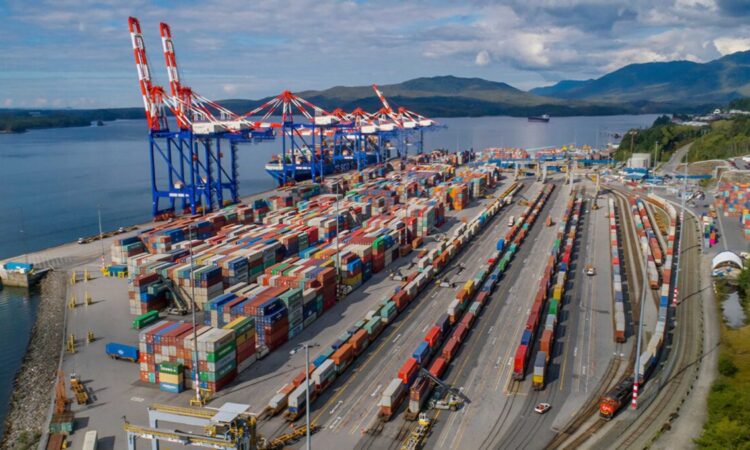Normal operations seen taking a week or longer
It could take the two largest Canadian railroads a week or more to recover from the effects of a shutdown that briefly stalled billions in freight including transborder trade with the United States.
Canadian National and Canadian Pacific Kansas City saw most of their unionized workforce go back to work Monday, days after the Canada Industrial Relations Board affirmed an order by Labor Minister Steven MacKinnon ending a lockout by the carriers and ordering binding arbitration to resolve the contract standoff with the Teamsters Canada Rail Conference.
While train movements were halted for less than 24 hours, CN and CPKC had embargoed shipments for more than a week leading up to the lockout deadline. That had interrupted supply chains to a number of customers, some of whom had cut production shifts, according to published reports. Intermodal container flows into and out of ports were halted, where some terminals were already struggling to manage a surge of import traffic during the peak trans-Pacific shipping season.
Rail-served trade between Canada and the U.S. was $9.1 billion in June, approximately 14% of all trade between the two countries, according to the Bureau of Transportation Statistics.
“From our experience with previous rail strikes in Canada, we expect it to take up to a week for each railroad to be fully reset and running smoothly again,” said Scott Shannon, vice president, Canada, for C.H. Robinson. “It will take much longer to catch up with shipments that have gotten backlogged.”
Estimates peg the shutdown at a small percentage of $52 billion in total freight moved per day; railroads account for about 28% of that on a tons-mile basis.
Shippers dependent on rail to move containerized intermodal shipments were watching the western Canadian gateways of Vancouver and Prince Rupert in British Columbia. Logistics services providers said they were working with customers to avoid potential snarls, with disruptions from recent longshore labor disputes fresh in mind.
Prior to the shutdown, ITS Logistics was “working with shippers to check all of their import ocean container shipments that arrive at U.S. rail ramps to ensure that they do not have Canadian rail legs,” said Paul Brashier, vice president of global supply chain for ITS Logistics.
Brashier said the longshore strike at western Canadian ports in 2023 affected an estimated $800 million of cargo each day. ITS has been warning of port disruptions for months in its Port/Rail Index, and Brashier said it was the top concern in 2024. Two-thirds of Port of Vancouver cargo, including 90% of international exports, rely on rail, according to the Vancouver Fraser Port Authority.
“With CN and CPKC rail service resuming at the Port of Vancouver this week, our focus is now on implementing a recovery plan in coordination with industry partners including shipping lines, rail companies and marine terminals,” the VFPA said in a statement. “This includes anchorage prioritization to balance the needs of business sectors and commodities as we work to restore full port operations and fluidity.” The port added it is closely monitoring operations to support time-sensitive cargo movements and ensure equitable distribution of anchorages and other shared resources.
While the harvest of western Canada wheat — a major export — is underway, executives on both sides of the border were waiting on further developments.
“While we are encouraged by the order to resume operations and proceed to arbitration, it is still too early for our members, the U.S. (and Canadian) agriculture and forest products exporters, to celebrate,” said Peter Friedmann, executive director of the Agriculture Transportation Coalition, based in Washington. “Some labor sectors are contesting the Canadian government’s arbitration order, and anyone who has followed relations between transportation labor and management, knows not to take anything for granted. This goes for all freight modes, including those upon which agriculture depends – rail, truck, marine terminals. This week we will continue our Agriculture Transportation Coalition briefings, to assure a realistic understanding of if, when and how this matter will be finally resolved.”
This story was updated on August 26 at 6:36 p.m. ET with comments from the Vancouver Fraser Port Authority.


